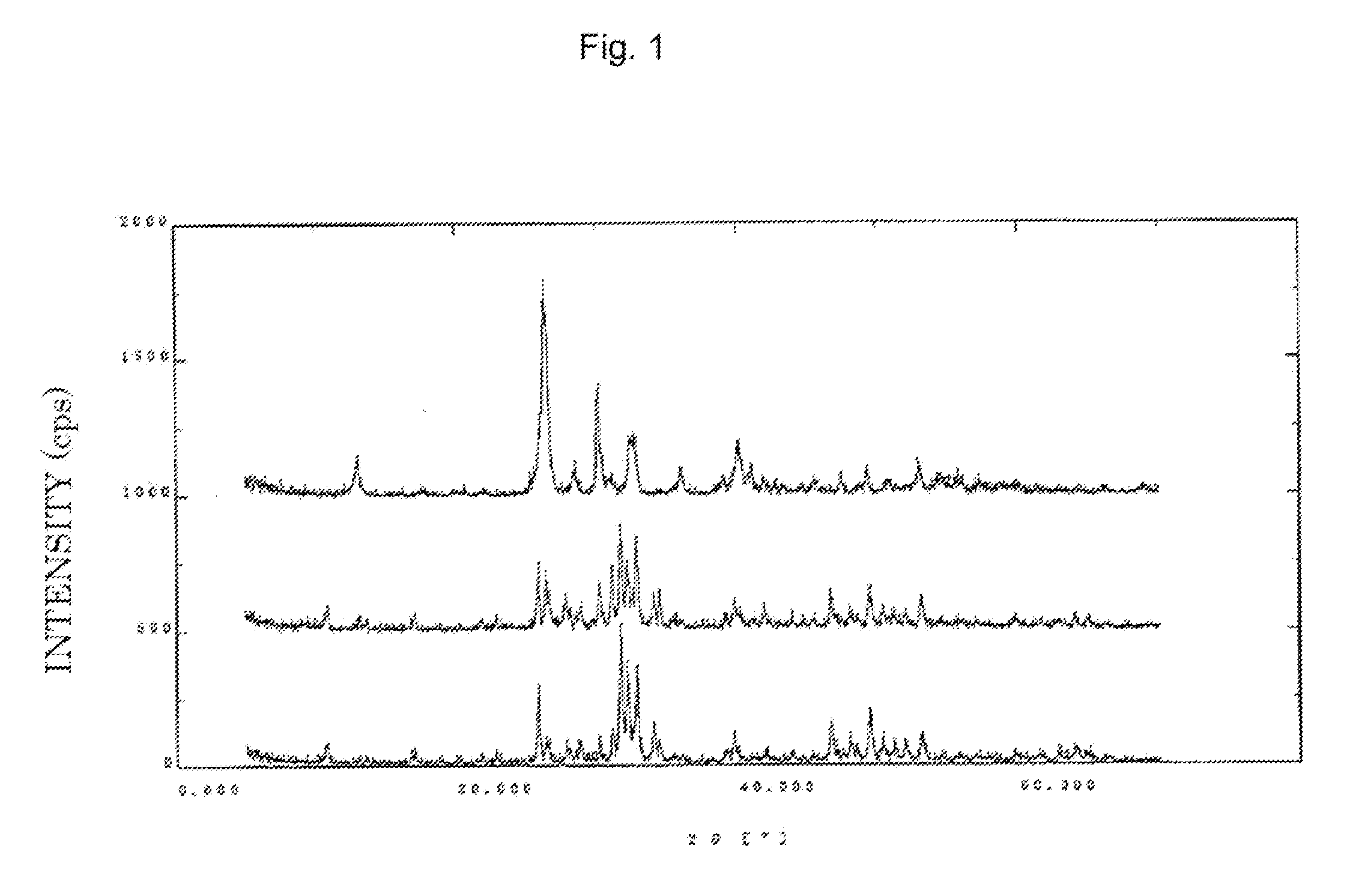Core particle for pharmaceutical preparation
- Summary
- Abstract
- Description
- Claims
- Application Information
AI Technical Summary
Benefits of technology
Problems solved by technology
Method used
Image
Examples
embodiment
[0075]One example of an embodiment using calcium hydrogen phosphate (noted above) as the raw material powder is presented below.
[0076]The calcium hydrogen phosphate is basically anhydrous calcium hydrogen phosphate, and preferably n in the above formula represents 0≦n≦0.2.
[0077]A monoclinic system is one example of the crystal system of the calcium hydrogen phosphate, but the crystal system of the calcium hydrogen phosphate is not particularly limited herein.
[0078]The average secondary particle size of the calcium hydrogen phosphate fine particles normally is no more than 15 μm, preferably no more than 10 μm, and more preferably no more than 8.5 μm. For example, fine particles with an average secondary particle size of 1 to 10 μm can be suitably used. When the average secondary particle size exceeds 15 μm, the forming properties (binding properties) decrease. The lower limit of the average secondary particle size is not particularly limited herein, but normally it is about 0.5 μm.
[0...
example 1
[0106]First 191 g of calcium hydroxide was suspended in water and heated to 80° C. Then 193 g of 85% aqueous phosphoric acid was dropped thereinto, and the temperature was held at 80° C. for 30 min. After the reaction was completed a slurry of tribasic calcium phosphate (Slurry A) was obtained. After Slurry A was cooled to not more than 50° C., 13.7 g of anhydrous citric acid was added thereto, 91 g of 85% aqueous phosphoric acid was added, and the mixture was heated to 90° C. After the temperature had been held at 90° C. for 1 h, the reaction was completed. A powder was obtained by filtering and rinsing the reaction product with water, and drying the filtrate in a shelf-type dryer. The resulting powder was analyzed by powder x-ray crystallography, and the results are shown in FIG. 1. FIG. 1 shows three plots—the lower line is the starting material (Slurry A), the middle line is after the addition of phosphoric acid, and the upper line is the reaction product (the above powder). As ...
examples 2 to 5
[0109]The raw materials shown in Table 1 were loaded into a high-speed mixer / granulator (Fukae Powtech model LFS-GS-2J), water or a mixed solvent (ethanol:water=1:4 v / v) was added, and wet granulation was performed. After the granules had been dried for 24 h at 80° C., they were sorted by sieve into 30 to 142 mesh products. The preparation conditions and properties of each sample are shown in Table 2.
TABLE 1ExampleRaw materialEx. 2Same as in Example 1Ex. 3Silicon dioxide powder (Commercial product manufactured byTomita Pharmaceutical Co. Ltd.: Silicon dioxide hydrate A1pulverized with hammer pulverizer to average particle sizeof 20 μm)Ex. 4Aluminum hydroxide (Commercial product manufactured byTomita Pharmaceutical Co. Ltd.: Japanese Pharmacopoeiagrade dry aluminum hydroxide gel, average particle size 6 μmEx. 5Aluminum silicate (Commercial product manufactured byTomita Pharmaceutical Co. Ltd.: Japanese Pharmacopoeiagrade synthetic aluminum silicate, average particle size 13 μm
[0110]T...
PUM
| Property | Measurement | Unit |
|---|---|---|
| Length | aaaaa | aaaaa |
| Length | aaaaa | aaaaa |
| Length | aaaaa | aaaaa |
Abstract
Description
Claims
Application Information
 Login to View More
Login to View More - R&D
- Intellectual Property
- Life Sciences
- Materials
- Tech Scout
- Unparalleled Data Quality
- Higher Quality Content
- 60% Fewer Hallucinations
Browse by: Latest US Patents, China's latest patents, Technical Efficacy Thesaurus, Application Domain, Technology Topic, Popular Technical Reports.
© 2025 PatSnap. All rights reserved.Legal|Privacy policy|Modern Slavery Act Transparency Statement|Sitemap|About US| Contact US: help@patsnap.com

